
Ashley Cook
February 16, 2023
On January 14, two separate exhibitions opened simultaneously at Belle Isle Viewing Room. Most recently, what used to be the workshop of Pence Fine Art became a second showspace for the gallery, and this would be the inaugural event where two separate artists would show their work side by side. Nancy Thayer’s Patinated Papers welcomes the visitors with a display of nine works that occupy an ambiguous realm of tactility.
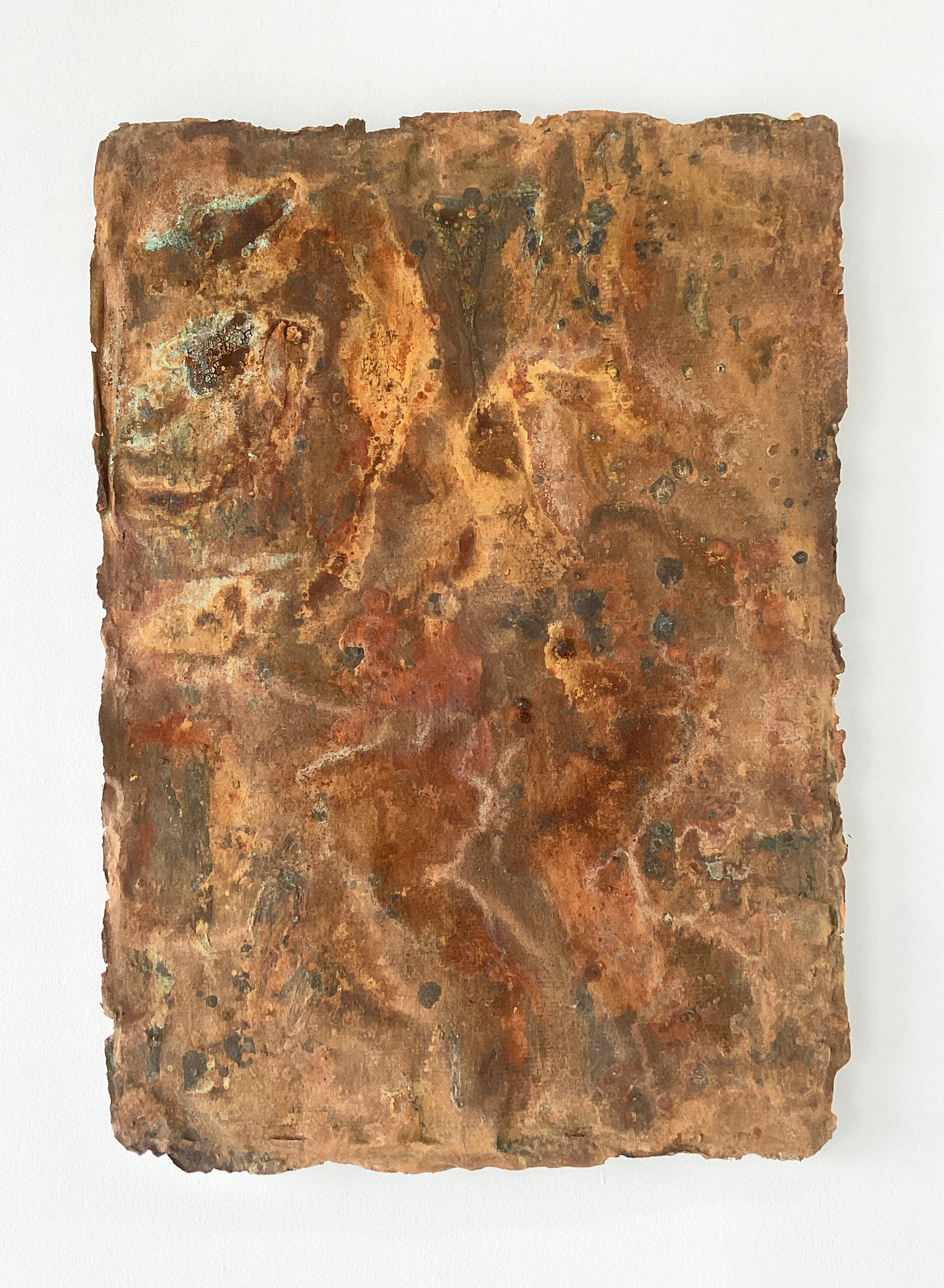
Our vision tells us that these pieces are rust consumed steel that are the results of exploring the creative potential of oxidation, however their particular method of display gives a feeling of weightlessness to these supposed steel panels. Thayer has worked for years with the harmony of opposing materials, beginning to introduce steel to her painting practice in the year 2000. Often labeled as “mixed media” works, the viewer could decipher through close observation which media are at play, and these details are always clarified by the exhibition texts as well as the verbiage used by the artist herself.
While navigating this work that has been carefully stored since they were originally produced in 2001, we learn that they are not made of the heavy material as we may have first thought. Two decades ago, Thayer traveled to Poland for a week-long residency where she made the paper at the Muzeum Papiernictwa before traveling to Southern California to learn how to infuse it with particles of steel, later implementing this knowledge in Detroit. Her previous work with steel and patina paved the way for the use of an innovative technique. For this body of work, she used chemicals as if they were paint to produce landscape type abstractions that don’t just sit on the surface as they would with traditional painting, but sculpturally engulf the entirety of their form. A balance between painting and sculpture seems to be the underlying theme between both of the exhibitions on display, actually. Just like Nancy Thayer’s work floats parallel to the wall, a similar weightless yet object-like quality is realized through the use of fragile structures that support Chris Pinter’s Remnants as they float parallel to the ground.
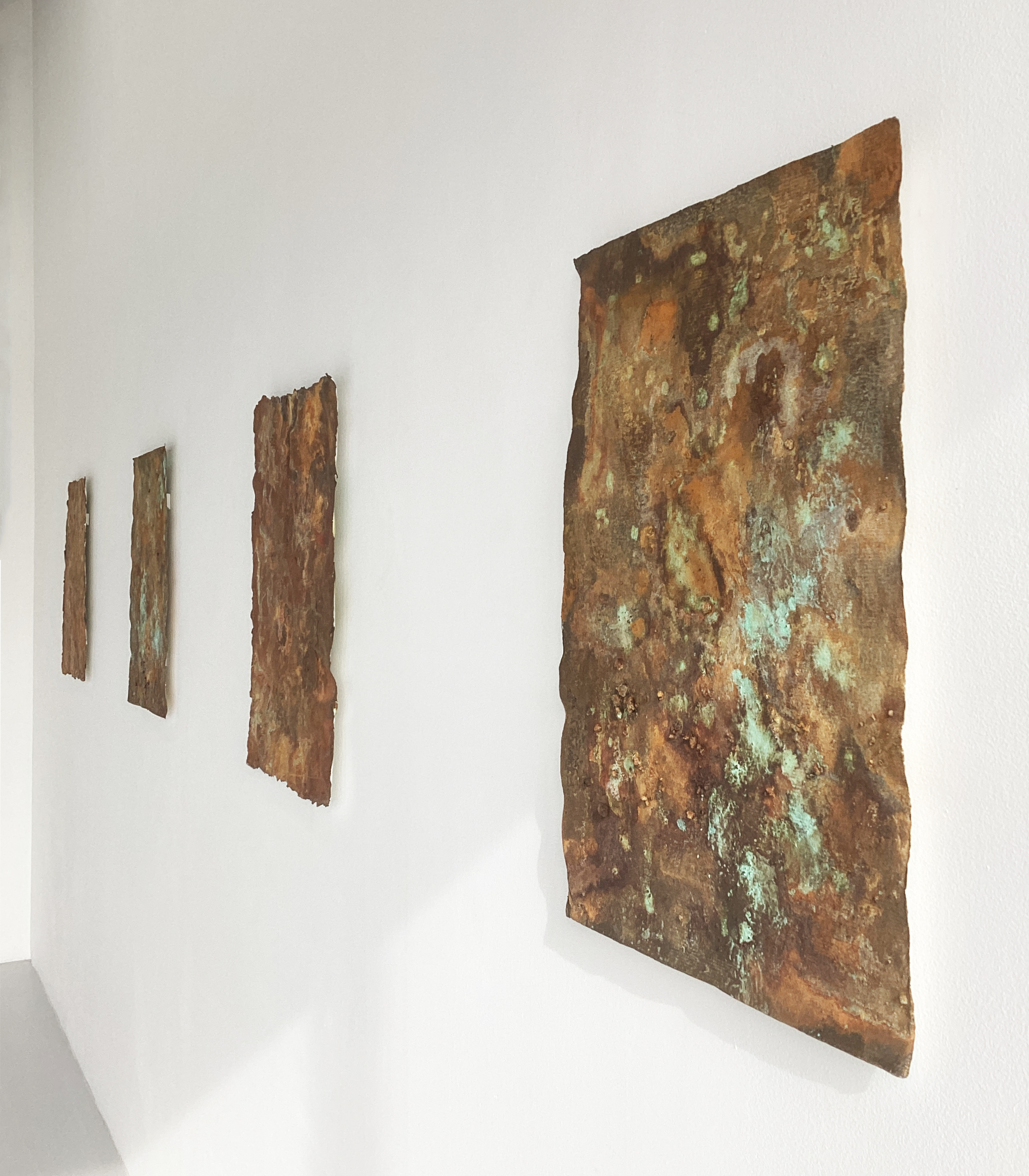
Pinter’s earnest approach to exploring painterly techniques and two-dimensional mark making highlights the focus of his studio practice between 2020 and 2022. His reduced concern for archival preparations of the surfaces or lack of need to establish their purpose encourages us to assume a more intimate viewpoint, entering into the work as remnants of the artist’s process of discovery.
During the artist talk at the gallery a week after the opening, Pinter iterated that these pieces are not necessarily made with the goal of becoming art hung on a wall with a capital A. They could just as comfortably become pages in one of the artist’s books, or remain as mere studies in the ever growing collection that investigates abstraction, representation, material, and the linguistic boundaries of each.
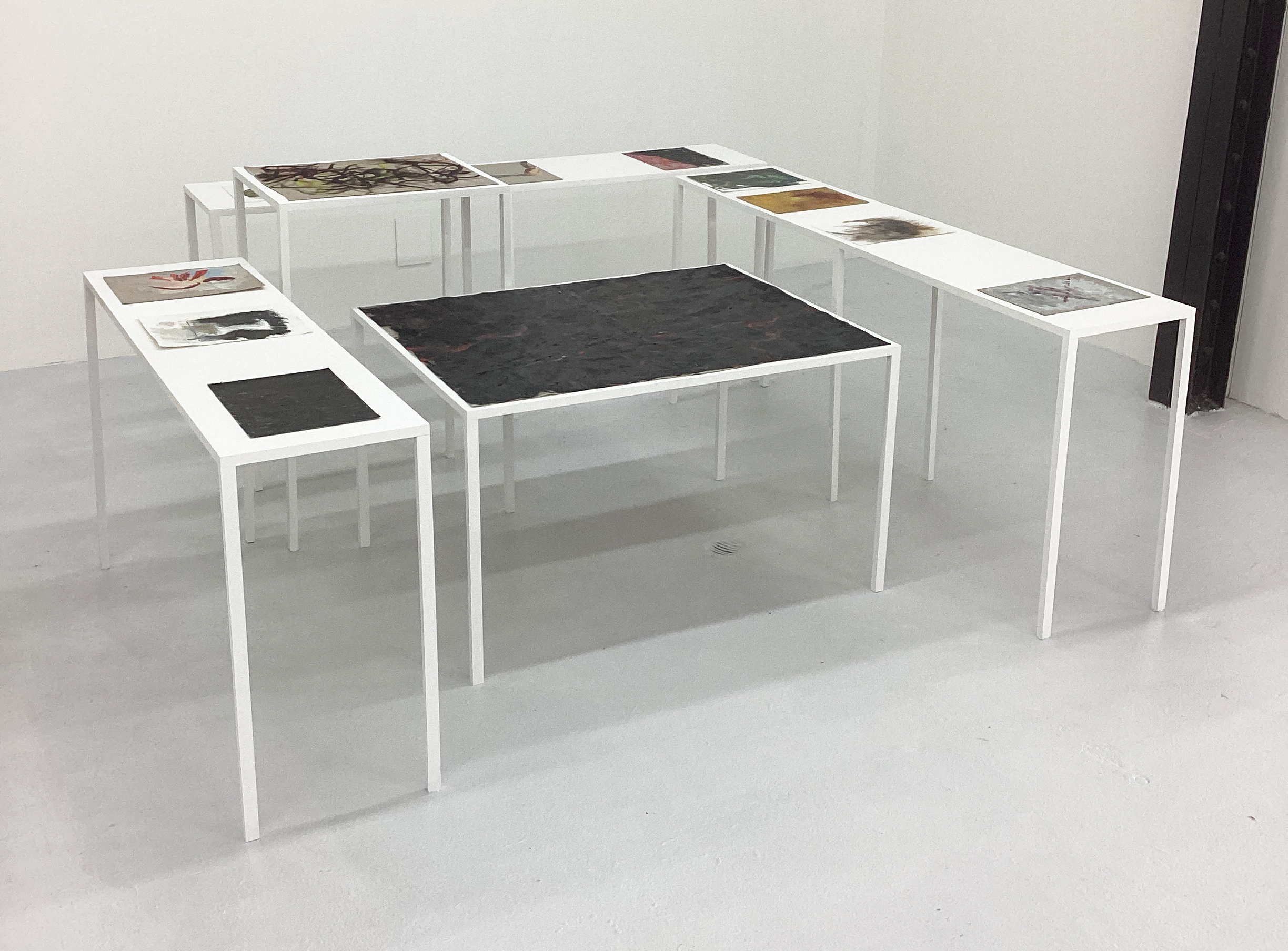
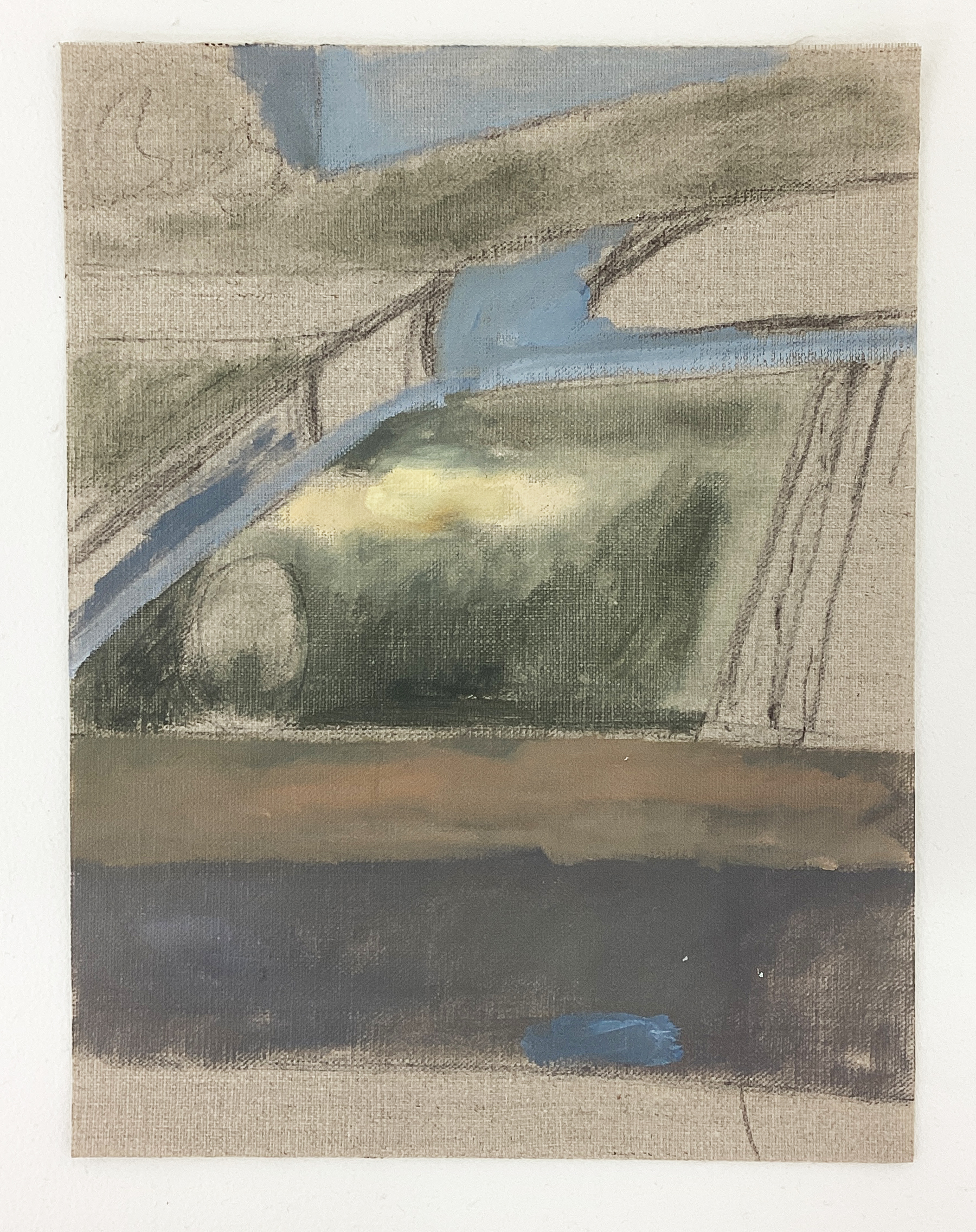
Around the world, our main methods of communication between humans consist of speech or writing presented in a structured way. But the millions of words available in this world remain insufficient due to the complexity of our thoughts and emotions. For centuries, creative endeavors of many kinds have served as an outlet to explore communication outside of the limits of written and spoken words, and both Patinated Papers and Remnants are some examples of this. Like many painters, the application of paint, charcoal, pencil, etc in Pinter’s works hold the movement of the body, speaking to one of the most fundamental means of expression.
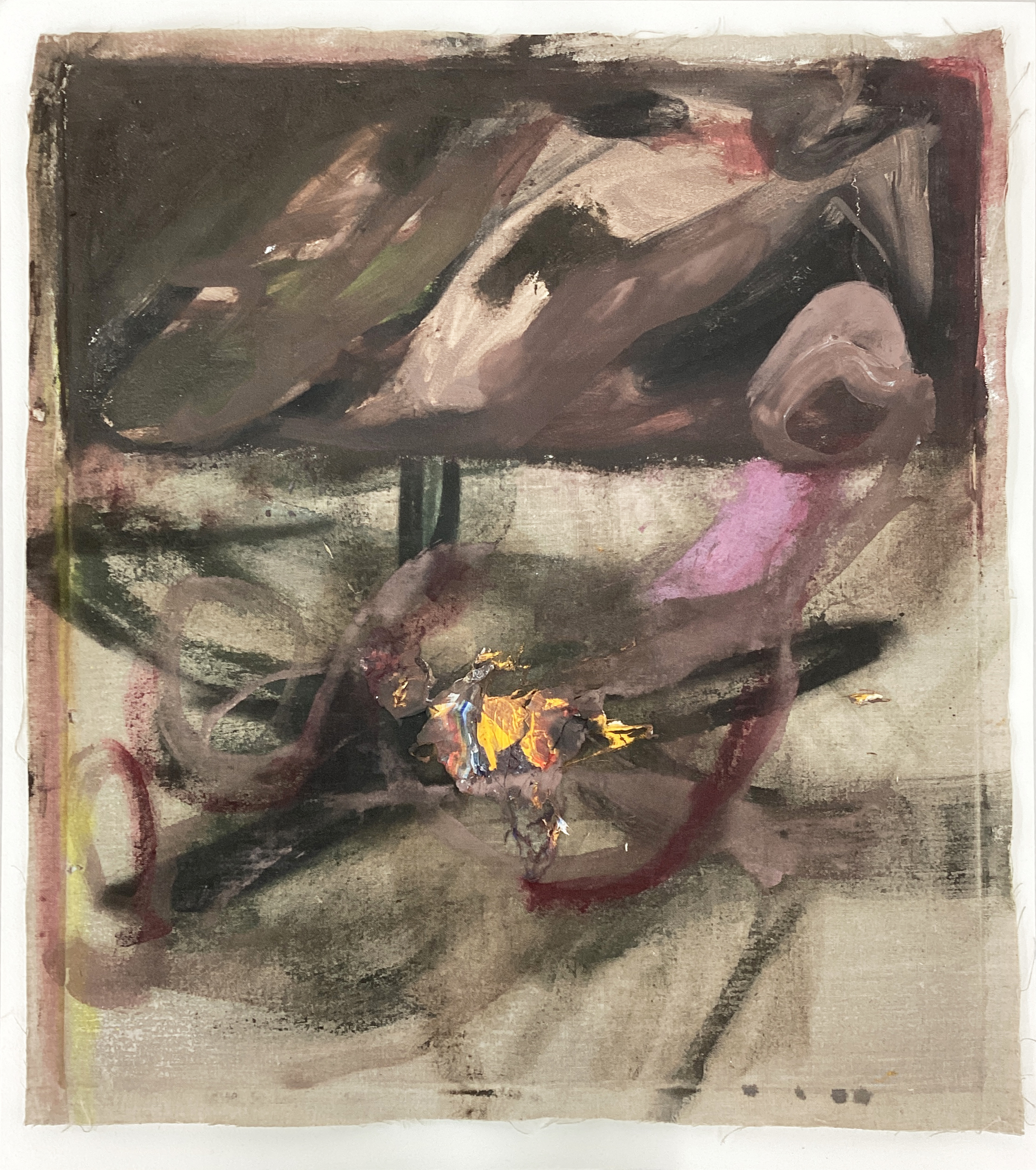
Color, composition and subject come next, which also seem to be rooted more so in emotion than theory here. A gesture can be made through a physical movement or the result of a physical movement, but can also be made through the process of editing. Despite Pinter seeking to show the viewer the messy, unclear and vague aspects that go into making art, what is on display, similar to culinary arts or an orchestra with different ingredients or instruments that come together to create something whole, is the result of a heavy edit.
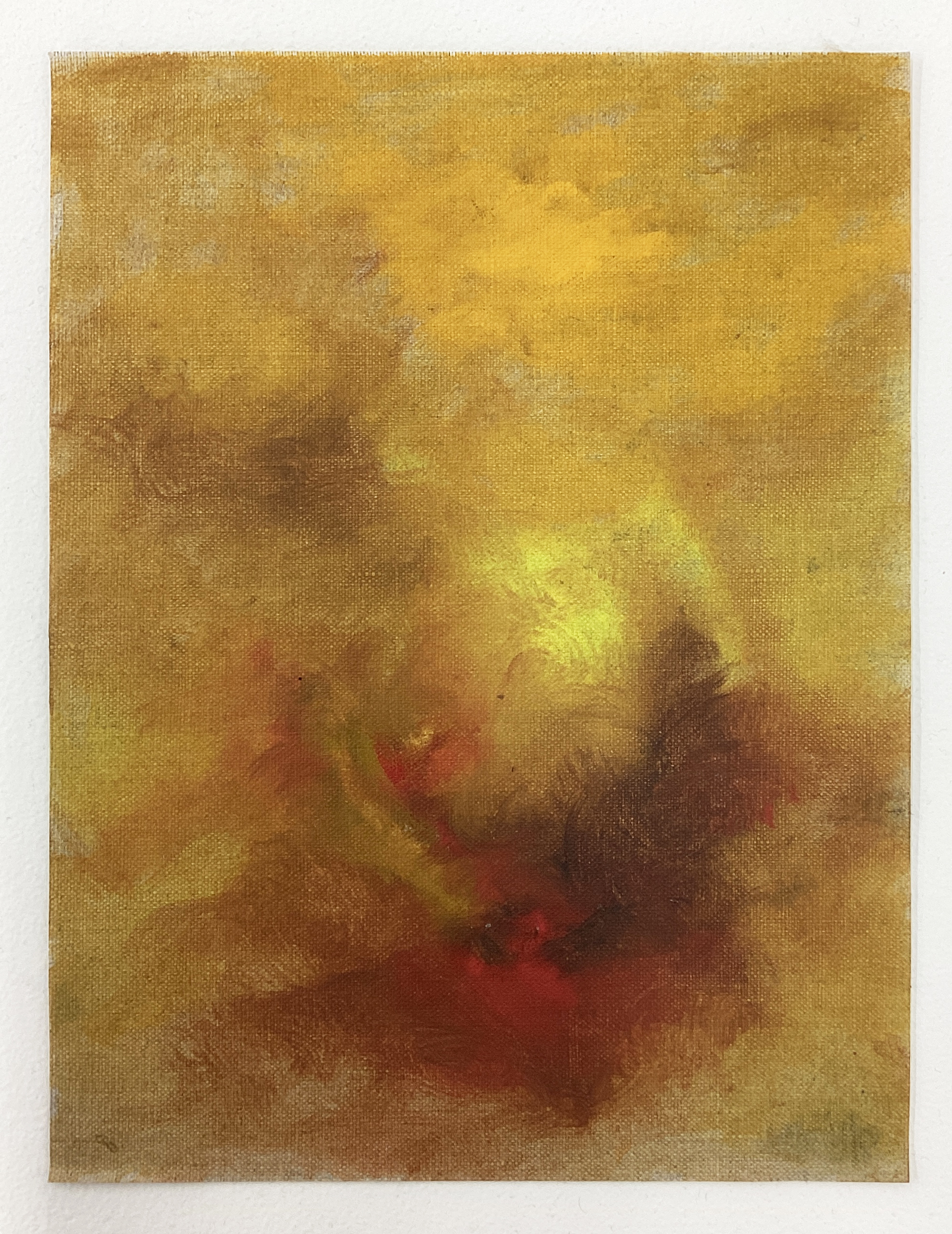
Nancy Thayer’s work explores a more conceptual approach to gesture, highlighting the multiple facets in which meaning can occupy form and the relationship between materials. She sees this work as landscapes that draw the viewer into a vision of leaves layered season after season, looking down on the ground while walking in the fall, then suddenly being pulled inward toward a horizon before realizing what you’re actually looking at is rusted paper. They pay homage to the rich history of illusion and the poetics of diversity, which can be as delicate and fragile as life.
Both exhibitions are on view until February 28 by appointment
Learn more about Belle Isle Viewing Room at their website:
https://www.belleisleviewingroom.com/